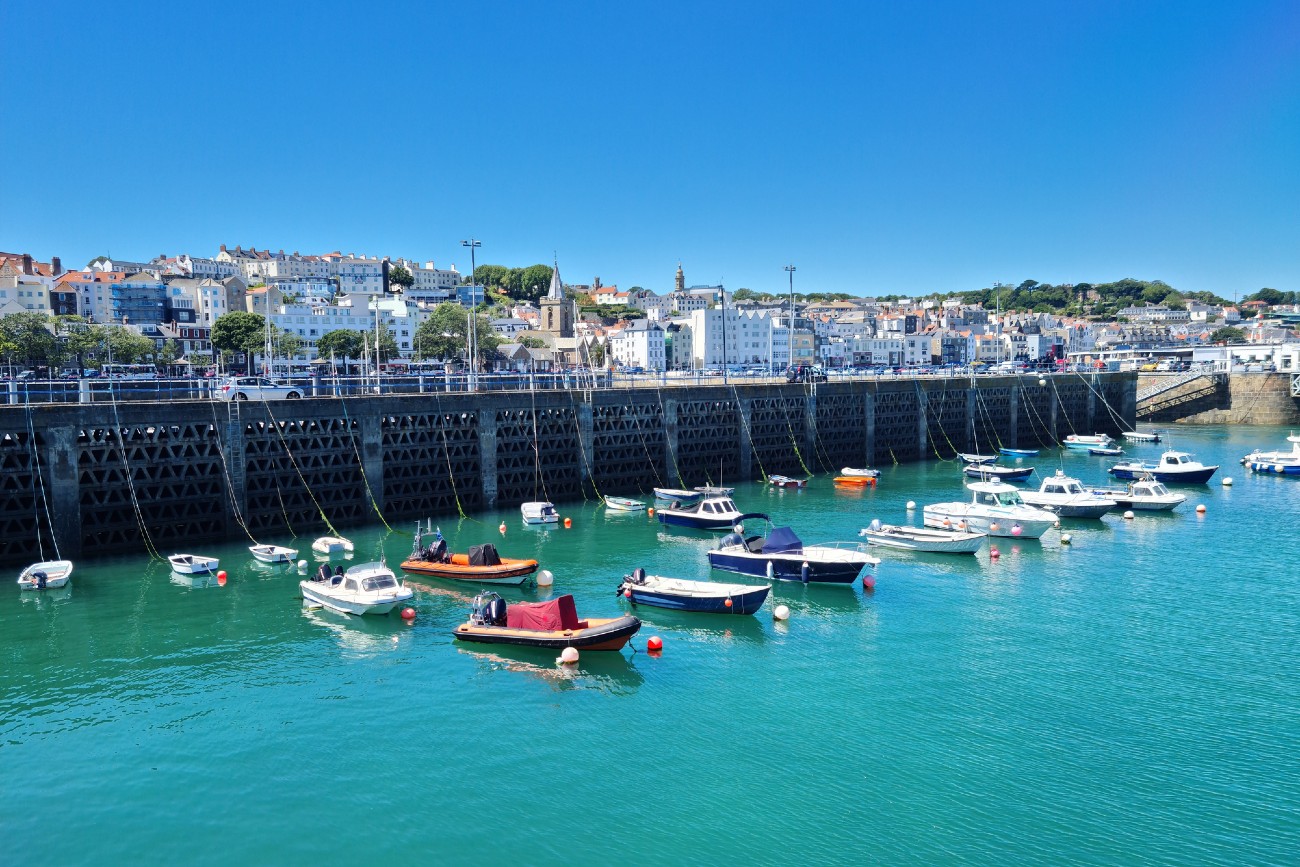
Guernsey – Bréhon, Caquorobert, Crevichon, Herm, Jethou, Les Hanois, Les Houmets, Lihou
The second largest island in The Channel Islands is Guernsey. It is only 45 minutes by plane from England and 30 minutes by flight from France. Its area is 25 square miles and it has a population of just over 67,000.
Like the Bailiwick of Jersey, the Bailiwick of Guernsey is a dependency of the British Crown, so the head of state is Queen Elizabeth II, who in turn is represented by a lieutenant governor.
In the case of the Bailiwick of Guernsey, this includes three independent states: Guernsey, Alderney and Sark. From a fiscal point of view, each one is autonomous and has its own laws regarding taxes and other civil matters.
Its connection with the British crown is very close. Its defense and matters related to foreign relations are handled from the United Kingdom, which is also in charge of some matters related to the local legislation of the island.
Its capital is St. Peter Port, and long before the Romans made The Channel Islands part of their empire in 200, the place was already an important port for commercial exchange. Today, few traces remain of those times and the British landscape dominates the scene. Proof of this is Castle Cornet, a fortress with more than 800 years of history where the visitor can enjoy beautiful views of the port, as well as the nearby islands of Herm and Sark.
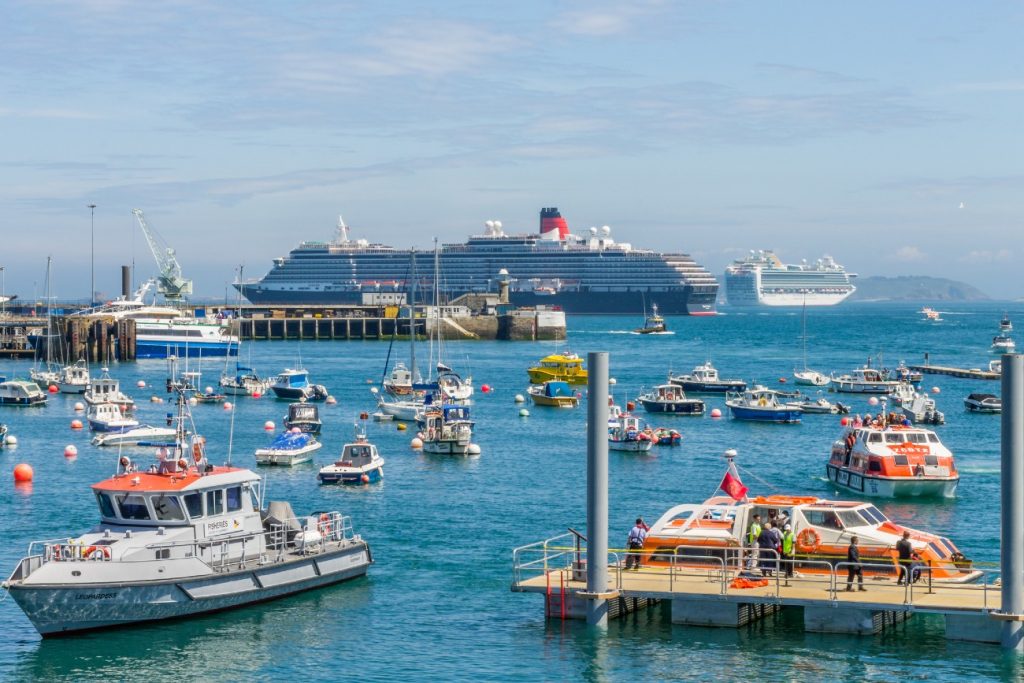
St Peter Port, Guernsey
Guernsey’s Economy
Agriculture and tourism are two of the main sources of income for Guernsey’s coffers, as are the island of Jersey and others in The Channel Islands.
In the case of tourism, we already mentioned Castle Cornet, but there are also Fort Gray, the Guernsey towers and some German fortifications dating from the Second World War, as well as some museums and sites of cultural interest.
Agriculture is their other source of income, with large amounts of vegetables and potatoes planted on thousands of hectares spread throughout the island for local consumption and for foreign trade.
Milk production is also important in Guernsey. There are about 1,600 cows on the island. Each produces enough milk to supply the island for a period of ten months. I love to put the local milk in my tea, it tastes super delicious.
Land ownership for Guernsey farmers is a problem, as only 20 percent of farmers own their own farms, while the remaining 80 percent own it under an annual lease, which undermines security for farmers, who, on average, earn or lose 10 percent of the land they work annually.
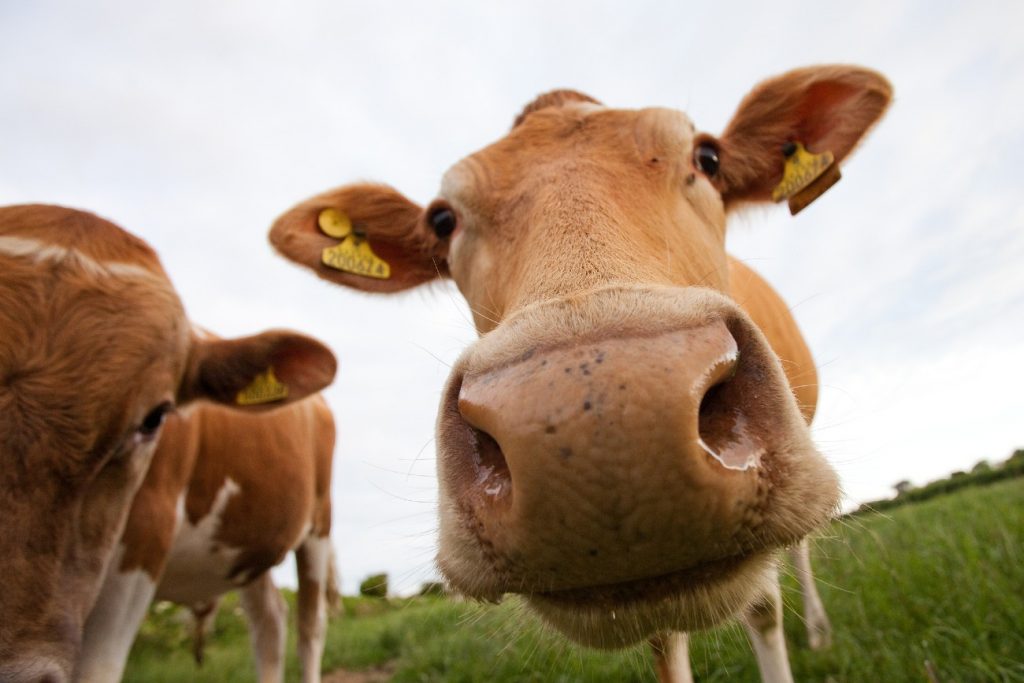
The Guernsey Cow
Guernsey: Tax Haven?
Financial services are another source of income for Guernsey, to the point that 32 percent of its Gross Domestic Product is supported by banking, insurance and fund management.
Offshore banking in Guernsey began to expand in the mid-20th century, and it was in the 1960s that it experienced the greatest growth, becoming what it is today.
Currently, there are more than 25 financial institutions on the island that serve the requirements of certain clients seeking specific banking services.
Offshore banking of Guernsey relies on specialized financial and wealth management industries, which includes the administration of trusts, of various investment vehicles, and captive insurance entities, according to Globalbanks.
Today, the island has more than £ 100 billion in deposits, making it a major offshore hub that is also not on any blacklist or watchlist. That is why Guernsey is considered a tax haven. Also, you have no capital gains taxes, inheritance taxes, estate taxes, corporate taxes, and favourable income tax rules.
The island has become a place of great interest for those who deal with fund management, estate planning, international asset management, private equity, among others. Even more now, when the European Union (EU) and the United Kingdom (UK) are struggling with Brexit, Guernsey is an independent state from both parties, which makes it an ideal hub for peoples and companies with interests in both the EU and the UK.
But who or who is Guernsey offshore banking ideal for? Is it for those seeking personal banking services, for those seeking day-to-day business banking, or for both? In those cases, it is best to seek financial services offered by Jersey and the Isle of Man.
Offshore banking on the island of Guernsey focuses more on the needs of wealthy individuals, institutional investors, and wealth management entities. That is why the financial services offered in this town are linked to private banking, wealth management, custody, and other related services.
For those wishing to open a bank account at an offshore bank on the island of Guernsey, it may not be entirely easy. Applicants will need to find a bank that accepts their customer profile, offers the financial services you need, has enough ties to the required jurisdictions, and can meet the high deposit and investment requirements the bank demands for certain types of customers.
Learn About Guernsey’s History
We previously mentioned Castle Cornet as one of Guernsey’s tourist attractions. Along with the barracks of this fortress, there are a series of museums that tell the story not only of this castle, but also of the island in general.
We also find the Maritime Museum, where visitors can learn up close about the importance of water navigation for this island.
Historical episodes of the island’s rich military heritage are also represented in these museums, such as, for example, the formation of the Royal Guernsey Militia in the 14th century.
The Guernsey Museum and Art Gallery provides visitors with a glimpse of not only who the island’s first inhabitants were, but a number of works of art that were inspired by the island’s beautiful landscapes.
The famous French writer Victor Hugo lived in exile on the island of Guernsey and it was at his home, Hauteville House, that he found the inspiration to write his most famous work, Les Misérables. This place was decorated by the author himself with objects that he collected during his long walks around the island and it was in the famous Crystal Room of the house where he found the inspiration to write the aforementioned novel.
During World War II, the Nazis built a vast network of underground tunnels. One such structure was the German Underground Hospital, built by prisoners of war and forced laborers.
La Valette Underground Military Museum is located just outside of St. Peter Port. It was built in what was once a fuel depot for German U-Boats and tells the story of the Nazi occupation during WWII. The same happens with the German Naval Signals HQ, a former base from where the occupants sent signals to Germany or the German Occupation Museum, a display of an incredible array of wartime memorabilia, and a place that pays tribute to those who endured the years of occupation.
But, without a doubt, beyond its interesting history, what most attracts the visitor (and me!) to the island of Guernsey is that opportunity to enjoy its coasts and nature, and the fact of being able to connect to be able to breathe a little of peace and tranquillity.
Caquorobert
Located in the Bailiwick of Guernsey, Caquorobert is a small uninhabited islet that is 250 miles east of the island of Herm. Its climate is usually temperate, with average annual temperatures of 50 degrees Fahrenheit, with August being the hottest (59 degrees Fahrenheit) and February the coldest (41 degrees Fahrenheit).
Crevichon
Crevichon is another islet in the Bailiwick of Guernsey. Its name means “island of crabs”, animals that were much more abundant in the place about a thousand years ago, when the waters were ten feet below their current position.
This islet has an extension of 695 feet by 551 feet and is only 705 feet away from the island of Jethou.
The famous Castle Cornet was built with stones quarried from Crevichon and it is also believed that the steps of St. Paul’s Cathedral in London were built with granite that was quarried from the island.
Herm
Do you want to get an idea of how quiet the island of Herm is? Cars and bicycles are prohibited here and only the use of tractors by local people is allowed.
This island, only one and a half miles long and less than half a mile wide, is part of the parish of St. Peter Port, and is administered by the States of Guernsey.
Its economy depends largely on tourism. The island receives up to 100,000 tourists during the summer, who arrive sailing by catamaran and who stay in cabins that are in various points of Herm, as well as in the only hotel in the place, the White House Hotel, where there are no televisions or telephones in the rooms.
Another way in which the island of Herm earns income is through the cultivation of vegetables, livestock, and the occasional issuance of postage stamps.
Herm is a place that invites visitors to walk its 3.9-mile perimeter and enjoy its crystal clear waters and white sands.
It is such a quiet place that there is only one primary school where no more than ten children attend, while those over 11 years old are educated in Guernsey in boarding schools.
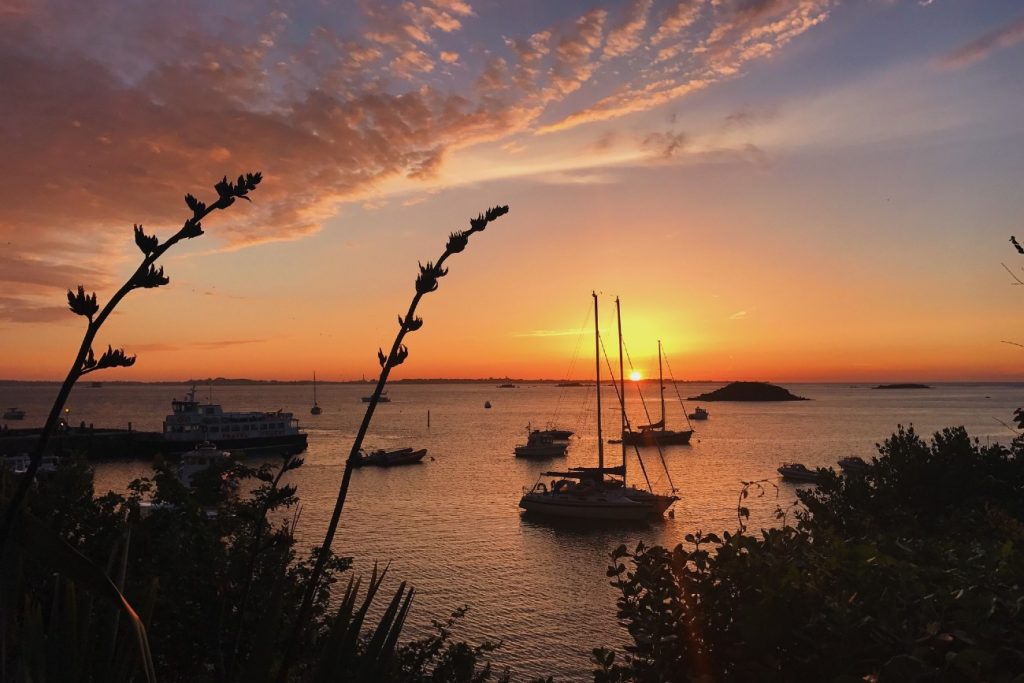
Seaside sunset nearby Herm island
Jethou
Jethou is a small island that also belongs to the Bailiwick of Guernsey in the Channel Islands. It is not open to the public, as it is private. It has an area of 44 acres.
Although the island was used by the Scottish novelist Compton MacKenzie between 1920 and 1923, and then by the Faed family between 1964 and 1971, in the 1950s and part of the 1960s it was opened to the public. During that time, postage stamps were issued and, beginning in 1970, the island was closed to the public.
They are administered by the States of Guernsey and the members are elected to the States of Deliberation, the name by which the legislature is known.
Les Hanois
At the westernmost point of The Channel Islands is Les Hanois reef, a group of rocks also known as Hanoveaux and which are southwest of Guernsey.
As the reef was responsible for many shipwrecks, the Les Hanois Lighthouse was built in hopes of decreasing the number of sinking ships.
Les Houmets
Les Houmets are a group of tidal islands located to the east of Guernsey in The Channel Islands. They are Houmet Benest / Houmet Benêt, Houmet Paradis and Houmet Hommetol.
Houmet Benest / Houmet Benêt is triangular in shape and measures 239 x 148 feet. During the German occupation, cannons were placed for their defence, which the British also did after World War II.
Houmet Paradis was used for fish gutting, for quarrying and for grazing cattle. From 1951 the island belonged to the Watson family, who placed it under the direction of the National Trust of Guernsey. Since 2004 it has been sold by the family to be able to maintain it as a nature reserve.
Houmet Hommetol is an island that is characterized by being covered by a flowering plant called Armeria. In general, the place is used for the collection of the mollusk known as ormer, which is very popular in the gastronomy of these islands.
Lihou
Lihou is another tidal island located on the west coast of Guernsey. It is part of the parish of St Pierre du Bois (Or St Peters) and is politically dependent on the States of Guernsey.
In the past, Lihou was used to collect seaweed that was used as fertilizer, but today its main source of income is thanks to tourism.
The island measures 36 acres and its temperature during the winter is usually around 4 degrees Celsius, while in the summer it is 66 degrees Fahrenheit.
Lihou is home to many species of animals and plants, such as the peregrine falcons and the flower known as Erodium.
Today the island is sustained by so-called eco-tourism, the responsibility of which lies in the hands of the Environment Department of the States of Guernsey.
Find out more about Guernsey in the following article: 5 Things You Didn’t Know About Guernsey, Channel Islands


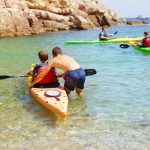
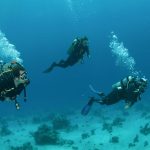

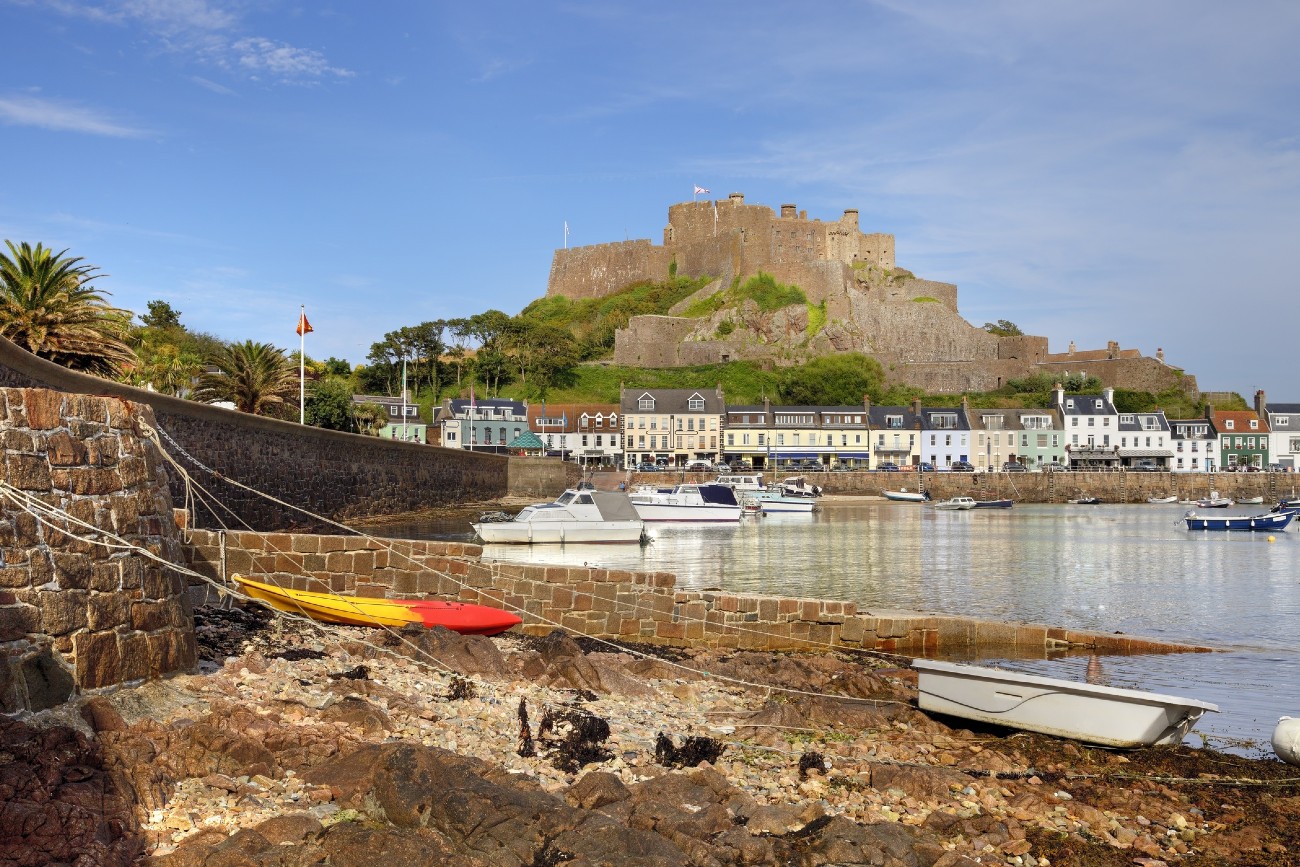
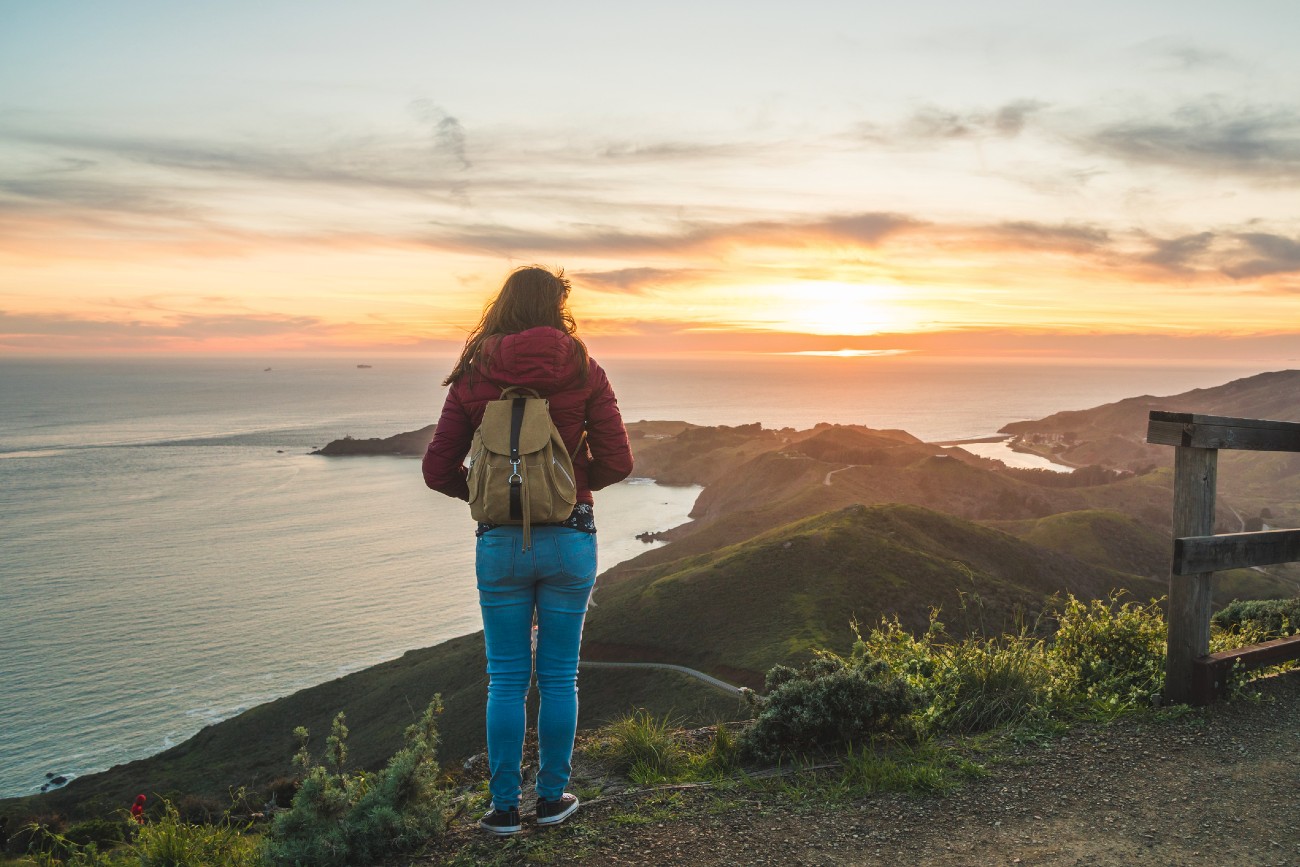
Sorry, the comment form is closed at this time.